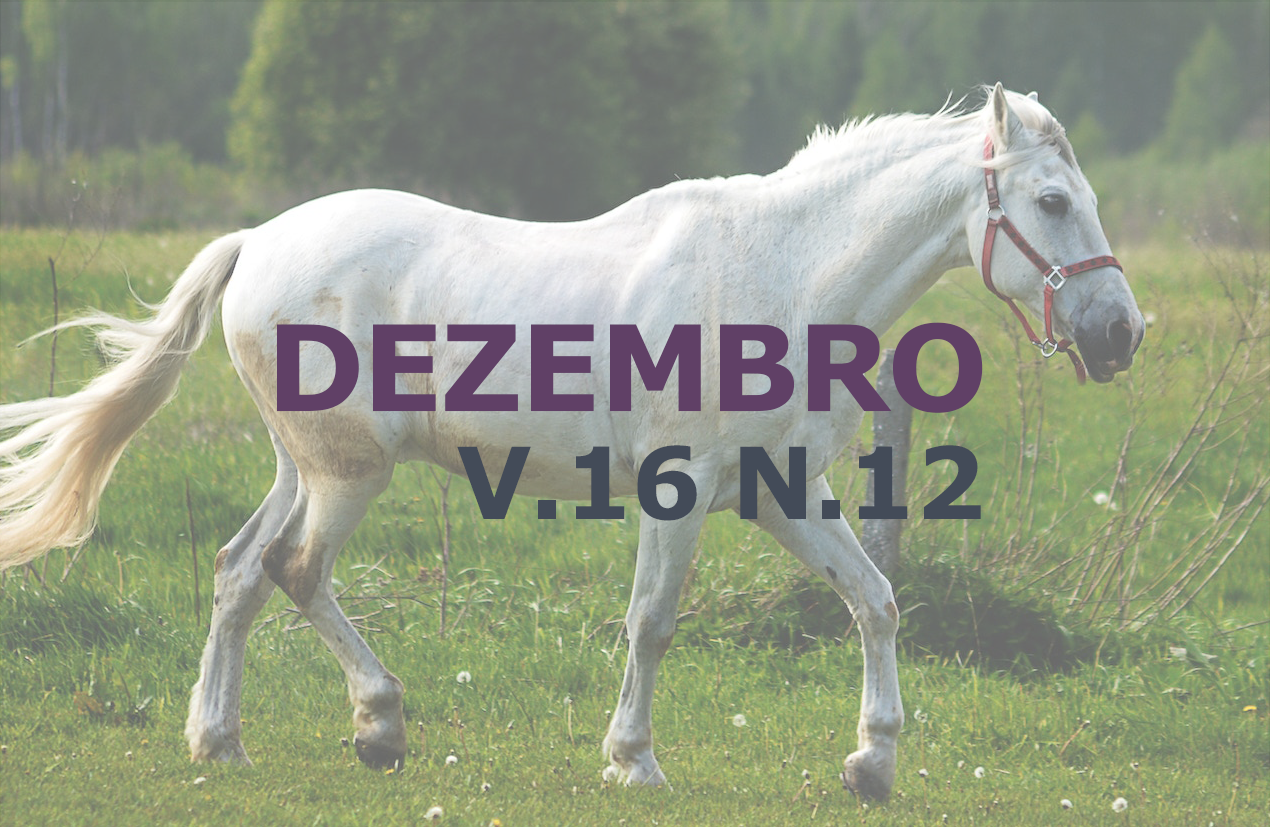Estudo do desempenho atlético do cavalo da raça Mangalarga
DOI:
https://doi.org/10.31533/pubvet.v16n12a1277.1-6Palavras-chave:
Atleta, condicionamento, eletrocardiograma, equinos, MangalargaResumo
O estudo consiste em relatar o ganho de condicionamento físico dos equinos seguindo um cronograma de treinamento, além de caracterizar a importante função do treinamento e seus parâmetros marcadores relacionados ao desenvolvimento do potencial atlético do cavalo Mangalarga. Para esse propósito, foi realizado uma pesquisa a campo. Os resultados eletrocardiográficos demonstraram alterações positivas no ritmo cardíaco, logo o cronograma de treinamento demonstrou ser eficaz para o condicionamento dos animais do presente estudo.
Referências
Mangalarga Marchador. Universidade Federal de Minas Gerais.
Amorim, R. A. R. (2018). Hemiplegia laríngea grau IV em equino: Relato de caso. Universidade Federal da Paraíba.
Bello, C. A. O. (2012). Avaliação da função cardíaca de equinos submetidos ao exercício de polo. Universidade de Brasília.
Byars, D. (2004). Pharyngoscopy and laryngoscopy. In N. M. Slovis (Ed.), Atlas of equine endoscopy (pp. 55–81). Elsevier. https://doi.org/10.1016/B978-0-323-01848-7.50008-7
Cândido, M. L. A. (2016). Avaliação de parâmetros fisiológicos, bioquímicos e hematológicos de equinos atletas praticantes de modalidade esportiva de alta intensidade e curta duração. Universidade Federal da Paraíba.
Cayado, P., Muñoz‐Escassi, B., Dominguez, C., Manley, W., Olabarri, B., De La Muela, M. S., Castejon, F., Maranon, G., & Vara, E. (2006). Hormone response to training and competition in athletic horses. Equine Veterinary Journal, 38(S36), 274–278. https://doi.org/10.1111/j.2042-3306.2006.tb05552.x.
Costa, C. F., Samesima, N., & Pastore, C. A. (2017). Cardiac mean electrical axis in thoroughbreds—Standardization by the Dubois lead positioning system. PLoS One, 12(1), e0169619. https://doi.org/10.1371/journal.pone.0169619.
Garrett, K. S., Pierce, S. W., Embertson, R. M., & Stromberg, A. J. (2010). Endoscopic evaluation of arytenoid function and epiglottic structure in Thoroughbred yearlings and association with racing performance at two to four years of age: 2,954 cases (1998–2001). Journal of the American Veterinary Medical Association, 236(6), 669–673. https://doi.org/10.2460/javma.236.6.669.
Marr, C., & Bowen, M. (2011). Cardiology of the Horse E-Book. Elsevier Health Sciences.
Primiano, F. M. (2010). Manejo e nutrição do cavalo atleta. Revista Cães & Gatos, 11, 16–18.
Santos, T. V. G. (2014). Variáveis fisiológicas e bioquímicas em cavalos atletas. Universidade Federal da Paraíba.
Thomassian, A. (2005). Enfermidades dos cavalos. Livraria Varela.
Wanderley, E. K., Manso Filho, H. C., Manso, H. E. C. C. C., Santiago, T. A., & McKeever, K. H. (2010). Metabolic changes in four beat gaited horses after field marcha simulation. Equine Veterinary Journal, 42, 105–109. https://doi.org/10.1111/j.2042-3306.2010.00288.x.
Yonezawa, L. A., Barbosa, T. S., & Kohayagawa, A. (2014). Eletrocardiograma do equino. Revista de Ciências Agroveterinárias, 13(1), 84–93.
Downloads
Publicado
Edição
Seção
Licença
Copyright (c) 2022 Guilherme Cardeal de Oliveira, Júlia Soares Carmesim, Talita Nascimento da Silva, Thayná Norberto do Sacramento, Danilo Maciel Duarte

Este trabalho está licenciado sob uma licença Creative Commons Attribution 4.0 International License.
Você tem o direito de:
Compartilhar — copiar e redistribuir o material em qualquer suporte ou formato
Adaptar — remixar, transformar, e criar a partir do material para qualquer fim, mesmo que comercial.
O licenciante não pode revogar estes direitos desde que você respeite os termos da licença. De acordo com os termos seguintes:
Atribuição
— Você deve dar o crédito apropriado, prover um link para a licença e indicar se mudanças foram feitas. Você deve fazê-lo em qualquer circunstância razoável, mas de nenhuma maneira que sugira que o licenciante apoia você ou o seu uso. Sem restrições adicionais
— Você não pode aplicar termos jurídicos ou medidas de caráter tecnológico que restrinjam legalmente outros de fazerem algo que a licença permita.





